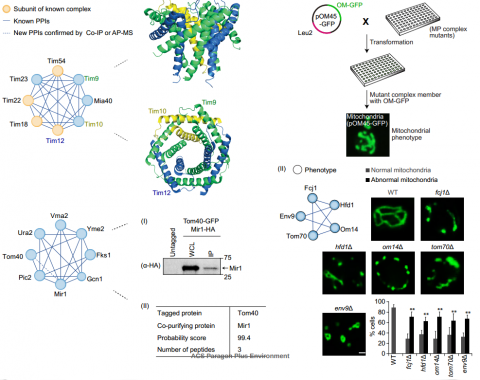Yeast Mitochondrial Protein-Protein Interactions Reveal Diverse Complexes and Disease-Relevant Functional Relationships

Jin K, Musso G, Vlasblom J, Jessulat M, Deineko V, Negroni J, Mosca R ... Aloy P, Zhang Z, Babu M, While detailed, focused mechanistic analyses of associations among mitochondrial proteins (MPs) have identified their importance in varied biological processes, a systematic understanding of how MPs function in concert both with one-another, and with extra-mitochondrial proteins remains incomplete. Perhaps consequently, many questions regarding the role of mitochondrial dysfunction in the development of human disease remain unanswered. To address this, we compiled all existing mitochondrial physical interaction data for over 1,200 experimentally defined yeast MPs, and, through bioinformatic analysis, identified hundreds of heteromeric MP complexes having extensive associations both within and outside the mitochondria. We provide support for these complexes through structure prediction analysis, morphological comparisons of deletion strains, and protein co-immunoprecipitation. The integration of these MP complexes with reported genetic interaction data reveals substantial crosstalk between MPs and non-MPs, and identifies potential novel factors in endoplasmic reticulum-mitochondrial organization, membrane structure, and mitochondrial lipid homeostasis. More than one-third of these MP complexes are conserved in humans and contain members linked to clinical pathologies, enabling us to identify genes with putative disease function through guilt-by-association. Although still remaining incomplete, existing mitochondrial interaction data suggests that the relevant molecular machinery is modular, yet highly integrated with non-mitochondrial processes.
Journal of Proteome Research, Advanced Online Publication,
2015, 14, 1220−1237
Pubmed: 25546499
Direct link: 10.1021/pr501148q
